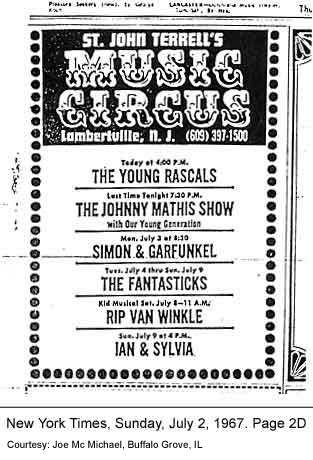Ed Ames
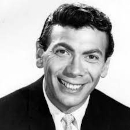
Born in Malden, Massachusetts on July 9, 1927 (real name Urick), Ed, Vic Ames, Gene Ames and Joe Ames were sons of Ukrainian Jewish parents and four of nine children. They were very poor but Ed attended Boston Public Latin School along with brother Joe.
The singing group, The Ames Brothers, was formed in 1947 in Boston and later appeared at the "Roxy Theatre" in New York City. During their early years, they won many amateur contests and made their professional debut at the "Foxes and Hounds," a posh Boston nightclub. They went on to play at the "Chez Paree" in Chicago and "Ciro's" in Hollywood. "The Riviera," just across New York City west of the George Washington bridge, was another nightclub where they appeared regularly.
Ed is still best known to audiences for his television role as "Mingo" on the Daniel Boone (1964) series on NBC. Ed also appeared on Broadway in "One Flew Over the Cuckoo's Nest" and "The Crucible." He also appeared in the off-Broadway production of "The Fantasticks" at the Sullivan Street Theatre in Greenwich Village which ran until 2002.
Paul Anka
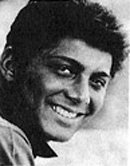
Anka was born on July 30, 1941, in Ottawa, Canada. Anka was the eldest of three children born to his Lebanese-Canadian parents. Shortly after his 15th birthday, Anka bought himself a ticket to Los Angeles, staying with an uncle there while he tried to make his name as a singer. At the year's end, he convinced his father to let him go to New York City in search of his big break. Soon after his arrival, he landed a meeting with Don Costa, an executive at ABC/Paramount Records. Within days, Anka's father was in New York signing a contract on behalf of his son, who was still a minor and thus couldn't sign on his own.
The label decided to release "Diana," a song Anka wrote for a girl he had a crush on back in Ottawa, as the artist's first single. Within weeks, the 16-year-old had the No. 1 song in the world. "Diana" went on to sell more than 20 million copies. Paul Anka was officially a teen idol. By the late 1950s, well before his 20th birthday, he was traveling the world, singing songs like "Lonely Boy" and "Put Your Head On My Shoulder" for swooning crowds.
As the 1960s progressed, Anka's style of music largely fell out of favor. Teens began to favor the rock 'n' roll of the Beatles and the Rolling Stones over the dreamy love songs of crooners like Anka. The big record labels quietly shoved him aside. For $250,000, he bought back the rights to all his music and began to transform his image from teen idol singer to Rat Pack-style songwriter.
Anka launched a wildly successful songwriting career from the casinos and supper clubs of Las Vegas and Florida. He wrote the theme song for The Tonight Show during Johnny Carson's reign.
Other career highlight include writing "She's A Lady," Tom Jones's biggest hit, and befriending Sinatra and writing "My Way," the singer's valedictory tune. In 1974, Anka released his own single, "(You're) Having My Baby." Anka has released more than 120 albums, together selling more than 10 million copies globally, not counting singles.
The Association
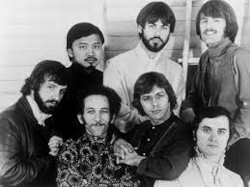
Saturday, August 9, 1969
Considering their lightweight image in the later 1960s, the Association made a controversial entry into the music market with "Along Comes Mary"— apart from its virtues as a record, with great hooks and a catchy chorus, it was propelled to the number seven spot nationally with help from rumors that the song was about marijuana. No one is quite certain of what songwriter Tandyn Almer had in mind, and one wonders how seriously any of this was taken at the time, in view of the fact that the song became an unofficial sports anthem for Catholic schools named St. Mary's.
"Cherish," a Kirkman original (which was intended for a proposed single by Mike Whelan of the New Christy Minstrels), was their next success, riding to number one on the charts. Among the most beautiful rock records ever made, the song has been a perennial favorite of romantic couples for decades since.
Source: music.yahoo.com/
Photo Source: artistdirect.com/
Baja Marimba Band
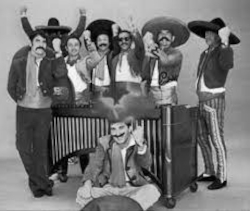
In 1962, the Baja Marimba Band was formed with these musicians, at one time or another, Roy Caton, Tony Terran, Pete Jolly, Lew McCreary, Nick Ceroli, Hal Blaine, Tommy Tedesco, Leon Russell, and Emil Richards.
The band hit the charts with its first single "Comin' in the Back Door" and recorded a dozen albums for A&M, as well as being Herb Alpert's support act. The main lineup from 1965-1971 was Bernie Fleischer on reeds, Ervan "Bud" Coleman on guitar (replaced upon Coleman's death in 1967 by Charlie Chiarenza), Frank DeCaro on rhythm guitar, Dave Wells on trombone, Lee Katzman on trumpet, Curry Tjader on percussion, Mel Pollan on Fender bass, and Frank DeVito on drums. Most if not all of the band's musicians were seasoned jazz musicians who performed with such artists as Woody Herman, Stan Kenton, Don Ellis, Terry Gibbs, Buddy DeFranco, Charlie Parker, and Dizzy Gillespie.
The group would appear on stage dressed in sombreros and old clothes, with fake mustaches, smoking cigars, and drinking beer, all of which was regarded as stereotypical Mexican behavior. The group appeared in goofy group photos on their album covers, stylishly created by Peter Whorf Graphics, and added a comedic allure. (Nearly all of the covers showed a man turned away from the 'camera' appearing to be urinating!)
Seen by many as a marketing gimmick, the group rode the wake created by Herb Alpert and the Tijuana Brass and Sérgio Mendes and Brasil '66 in the musically fertile mid-1960s. The content was considered "adult contemporary" or "easy listening" and consisted mainly of standards, originals and pop covers. Despite the humorous album covers, the music inside was a light and sophisticated mixture of bossa nova, jazz, and pop elements. The band performed in Maxwell House coffee commercials, during the peak of the group's popularity.
Brooklyn Bridge
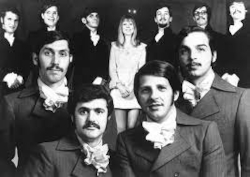
In 1968, Betty Sperber, owner and founder of the talent management and booking agency Action Talents in New York City, was hosting her once a month Battle of the Bands talent search at the Cloud Nine nightclub in Long Island and brought Johnny Maestro along as the evening's special guest star. Action Talents' Vice President and General Manager Alan White suggested that Maestro be backed up that night by a seven-piece brass-filled group of youngsters called The Rhythm Method. That night's performance was such a success that the next day Sperber decided to combine the talents of Maestro, the four Del-Satins, and The Rhythm Method. The new group's name came about after White made the off-handed comment that "it would be easier to sell the Brooklyn Bridge" than book the proposed 11-piece act.
Johnny and the Bridge rehearsed their unusual combination of smooth vocal harmonies and full horns, and signed a recording contract with Buddah records. Their first release, a version of the Jimmy Webb song "Worst That Could Happen" (a note-for-note cover of the version previously recorded by The 5th Dimension on the album The Magic Garden, which had not been released as a single), reached No. 3 on the Billboard pop chart. It sold over one and a quarter million copies, and was awarded a gold disc by the R.I.A.A.. The follow-up, "Welcome Me Love," and its flip side, "Blessed is the Rain,"—both by Tony Romeo—each reached the Top 50. A dramatic version of "You'll Never Walk Alone" and the controversial "Your Husband, My Wife" also reached the middle ranges of the charts. The group sold over 10 million records by 1972, including LP sales, mostly produced by Wes Farrell. Appearances on The Ed Sullivan Show, The Della Reese Show, and other programs helped to bring the group to the national stage.
After its heyday, the Brooklyn Bridge downsized to a five-man group, with the vocalists playing their own instruments. Later in the 1970s, as the Rock and Roll Revival evolved from a nostalgic fad to a respected genre, the group began to add members, retaining its core vocalists. By 1985, the group had solidified into an eight piece group.
The Paul Butterfield Blues Band
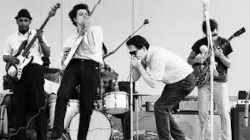
Saturday, July 25, 1970
The Paul Butterfield Blues Band electrified the blues while giving it a rock and soul swing that had not really been done before. The band was first formed by Paul Butterfield in 1963. Paul Butterfield was a blues harmonica player who had worked with the legendary blues artist Muddy Waters.
Paul Butterfield went on to form the Butterfield Blues Band with Elvin Bishop and Mike Bloomfield on guitar. The band released a handful of albums in the 1960s. Only the first two albums featured Mike Bloomfield on guitar. Elvin Bishop would also eventually leave to pursue his solo career. It was career that included a huge top 10 hit with the song Fooled Around and Fell in Love. Rounding out the band in the early days was Mark Naftalin on piano, Jerome Arnold on bass and Billy Davenport on drums.
Paul Butterfield continue to release music throughout the seventies and into the 80s under his own name and became involved in various projects. He passed away at a young age during his forties in 1987.
Ray Charles
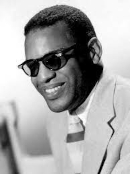
Saturday, July 26, 1969
Ray Charles was a legendary musician who pioneered the genre of soul music during the 1950s. Often called the "Father of Soul," Charles combined blues, gospel and jazz to create groundbreaking hits such as "Unchain My Heart," "Hit the Road Jack," and "Georgia on My Mind."
Ray Charles Robinson was born on September 23, 1930, in Albany, Georgia. As a child, Charles gradually began to lose his sight. He was blind by the age of 7, and his mother sent him to a state-sponsored school, the Florida School for the Deaf and the Blind in St. Augustine, Florida—where he learned to read, write and arrange music in Braille. He also learned to play piano, organ, sax, clarinet and trumpet. The breadth of his musical interests ranged widely, from gospel to country, to blues.
At the of age 16, Charles moved to Seattle. There, he met a young Quincy Jones, a friend and collaborator he would keep for the rest of his life. Charles performed with the McSon Trio in 1940s. His early playing style closely resembled the work of his two major influences—Charles Brown and Nat King Cole. Charles later developed his distinctive sound.
In 1950, Charles' now classic song, "I Got a Woman," reached No. 1 on the R&B charts. The song reflected an advance in his musical style. He was no longer a Cole imitator. Charles' biggest success was perhaps his ability to cross over into pop music too, reaching No. 6 on the pop chart and No. 1 on the R&B chart with his hit "What'd I Say."
The year 1960 brought Charles his first Grammy Award for "Georgia on My Mind," followed by another Grammy for the single "Hit the Road, Jack." Charles broke down the boundaries of music genres in 1962 with Modern Sounds in Country and Western Music. On this album, he gave his own soulful interpretations of many country classics. While thriving creatively, Charles struggled in his personal life. He continued to battle with heroin addiction. In 1965, Charles was arrested for possession. Charles avoided jail after his arrest for possession by finally kicking the habit at a clinic in Los Angeles.
In 1980, Charles appeared in the comedy The Blues Brothers with John Belushi and Dan Aykroyd. The music icon received a special honor a few years later as one of the first people inducted into the Rock and Roll Hall of Fame. He died in 2004, leaving a lasting impression on contemporary music.
Chubby Checker
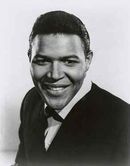
Ernest Evans, popularly known as Chubby Checker, was born October 3, 1941 is best known for popularizing the dance The Twist with his 1960 song The Twist. His pseudonym was given to him by the wife of Dick Clark as a play on the name of Fats Domino. The Twist was so popular that his public did not allow him to sing any other style of music.
Checker later lamented: "...in a way, The Twist really ruined my life. I was on my way to becoming a big nightclub performer, and The Twist just wiped it out. It got so out of proportion. No one ever believes I have talent."
He attended South Philadelphia High School with Frankie Avalon and Fabian. In 1964, he married Catharina Lodders, who had been Miss World in 1962.
His hit songs include: "The Twist," "Slow Twistin'"'" "Pony Time," "Let's Twist Again...," and "Dancin' Party."
Source: wikipedia.org/wiki/Chubby_Checker
Photo Source: www.dancetothesixties.nl/
Maurice Chevalier
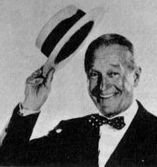
Maurice Chevalier, (born September 12, 1888, Paris, France - died January 1, 1972, Paris), debonair French musical-comedy star and entertainer who was known for witty and sophisticated films that contributed greatly to the establishment of the musical as a film genre during the early 1930s. His suave manner and half-speaking style of singing, together with his trademark tilted straw hat and a possibly exaggerated French accent, gained him international fame as a stage personality, and he became known as "the most popular Frenchman in the world."
Chevalier grew up in a struggling working-class family. He lacked interest in the trades, however, and made his debut as a Parisian café singer in 1901. By the 1920s Chevalier was a famous entertainer in French musical revues and was appearing in French films and made his first appearance in the United States. In 1928 a producer invited him to appear in American movies. His first Hollywood film, The Innocents of Paris (1929), was the prototype of the popular gay and charming musicals that followed, in which he often costarred with Jeanette MacDonald.
Chevalier returned to Paris in 1935. During World War II he continued to tour in the unoccupied areas of France but performed twice in Paris and once for French prisoners in a German camp (in exchange for the release of several POWs). He was denounced as a collaborationist, but his name was soon cleared, and he resumed his career in France. His popularity in the United States suffered for much longer, however, though he did have a successful North American tour in 1947.
Chevalier took up his Hollywood career in the 1950s, appearing with Audrey Hepburn in Billy Wilder's Love in the Afternoon (1957). His next film, Gigi (1958), won nine Academy Awards, including that for best picture, and remains Chevalier's most popular movie. His later motion pictures included Can-Can (1960) and Fanny (1961). In 1958 Chevalier received an honorary Academy Award for his more than 50 years of contributions to the entertainment field.
Classics IV
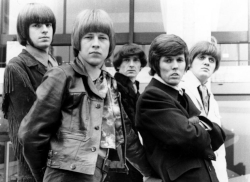
Their best known member was the Detroit-born singer Dennis Yost. At age 7, Yost moved to Jacksonville, Fla., where he first played drums in a mid-'60s band called the Echoes, followed by a stint with Leroy and the Moments. Yost's drumset was manufactured by Classic and the group, which played cover songs, changed its name first to the Classics before settling on Classics IV (another band had already trademarked the Classics).
Their first single release, "Pollyanna," just missed the Billboard Hot 100 in the fall of 1966, despite a promotional appearance on Dick Clark's Where the Action Is! TV program and, for the better part of the next year, the Classics IV languished.
But by late 1967, newly signed to Imperial Records, things began to look up. The Classics IV cut "Spooky." A followup single called "Soul Train" basically bombed but in the fall of 1968, now calling themselves Classics IV featuring Dennis Yost, they cut "Stormy."
There would be just one more major hit for the Classics IV, "Traces," even moodier than the first two Top 10s—and even more successful. Credited to Buie, Cobb and Emory Gordy Jr., the recording, which made use of a string section and oboe, went all the way to #2 in early 1969, and was later covered by the vocal group the Lettermen, jazz great Harry James and soul singer Billy Paul, proving its adaptability to various formats.
Those three songs are, quite likely, the only ones you know by the Classics IV. But they were far from finished. There was another top 20 hit in the spring of '69, "Everyday With You Girl," followed by no fewer than eight further chart singles all the way into 1975, on Imperial, Liberty and MGM South Records.
Wayne Cochran & His CC Riders
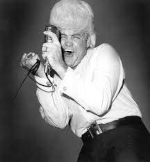
Blue-eyed soul singer Wayne Cochran was born in 1939 in Thomaston, Georgia. He started his first band in 1955 and was kicked out of high school for refusing to cut his flamboyant pompadour hairstyle. Cochran recorded his debut single, "My Little Girl," for the Scottie label in 1959. He went on to record a slew of singles throughout the '60s
In the early '60s he wrote and recorded the morbid teen death item "Last Kiss," which became a huge hit for 'J. Frank Wilson & the Cavaliers' in 1964. In 1963 he formed his own group called Wayne Cochran and the C.C. Ryders ("Cochran's Circuit Riders"). The band amassed an enormous following in the South and Midwest by extensively touring and performing at clubs, lounges and seedy dives all over the region. Cochran was famous for his massive white pompadour, outrageous outfits and full-throttle, raw-throated hoarse-'n'-ragged vocals. Jackie Gleason in particular was a big fan of Cochran's music and wrote the liner notes for his 1967 debut album. Moreover, Wayne not only made guest appearances on TV variety and talk shows, but also had straight acting roles on episodes of the TV series The Wild Wild West (1965) and The Duke (1979).
Cochran eventually became a born-again Christian and started his own ministry in 1981. He and the C.C. Riders performed at two reunion shows in in Florida in 2001. Cochran died at age 78 from cancer on November 21, 2017.
Judy Collins
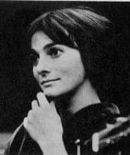
Sunday, June 18, 1967
Judy began her impressive music career at 13 as a piano prodigy dazzling audiences performing Mozart's "Concerto for Two Pianos," but the hard luck tales and rugged sensitivity of folk revival music by artists such as Woody Guthrie and Pete Seeger seduced her away from a life as a concert pianist. Her path pointed to a lifelong love affair with the guitar and pursuit of emotional truth in lyrics. The focus and regimented practice of classical music, however, would be a source of strength to her inner core as she navigated the highs and lows of the music business.
In 1961, she released her masterful debut, A Maid of Constant Sorrow, which featured interpretive works of social poets of the time such as Bob Dylan, Phil Ochs, and Tom Paxton. This began a wonderfully fertile thirty-five-year creative relationship with Jac Holzman and Elektra Records.
Around this time Judy became a tastemaker within the thriving Greenwich Village folk community and brought other singer-songwriters to a wider audience, including poet/musician Leonard Cohen, and musicians Joni Mitchell and Randy Newman. Throughout the 60s, 70s, 80s, 90s, and up to the present, she has remained a vital artist, enriching her catalog with critically acclaimed albums while balancing a robust touring schedule.
Chris Connor
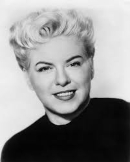
Mary Jean Loutsenhizer, known professionally as Chris Connor (November 8, 1927 - August 29, 2009) was an American jazz singer.
Chris Connor was born Mary Loutsenhizer in Kansas City, Missouri. She became proficient on the clarinet, having studied for eight years during middle school and high school. She sang with the college band at the University of Missouri, playing at functions in Columbia, Missouri.
In 1949 Connor recorded two songs with Claude Thornhill's band: "There's a Small Hotel" and "I Don't Know Why". With Jerry Wald's big band she recorded "You're the Cream in My Coffee," "Cherokee," "Pennies from Heaven," "Raisins and Almonds," and "Terremoto." Connor and Thornhill reunited in 1952 for a radio broadcast from the Statler Hotel in New York City for which she sang "Wish You Were Here," Come Rain or Come Shine," "Sorta Kinda," and "Who Are We to Say." In 1957, she ranked No. 10 in the Favorite Female Vocalist disk jockey popularity poll behind Lena Horne and June Christy.
A resident of Toms River, New Jersey, Connor died there from cancer on August 29, 2009, at the age of 81. She was survived by her longtime partner and manager, Lori Muscarelle.
The Cowsills
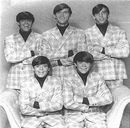
Saturday, September 5, 1970
The Cowsills are an American singing group from Newport, Rhode Island, six siblings noted for performing professionally and singing harmonies at an early age, later with their mother.
The band was formed in the spring of 1965 by brothers Bill, Bob, and Barry Cowsill; their brother John joined shortly thereafter. Originally Bill and Bob played guitar and Barry played the drums. When John learned to play drums and joined the band, Barry began playing bass. After their initial success, the brothers were joined by their siblings Susan and Paul along with their mother, Barbara. A seventh sibling, Bob's twin brother Richard, was never part of the band during its heyday, although he occasionally appeared with them in later years.
They appear on almost every popular show at the time and had their own NBC special, A Family Thing, which aired November 28, 1968. This was the only time The Cowsills worked with a choreographer. What the Cowsills boys found was happening was the music side being made less important to the producers and the production side greater. Susan had joined the group now and Bill and Bob, especially, found it hard to carry on their musical dreams. The Cowsills were one of the first (if not THE first) celebrities with a million dollar contract for product endorsement, as they became spokespersons for the American Dairy Association.
The Fifth Dimension
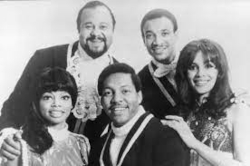
The 5th Dimension is an American popular music vocal group, whose repertoire includes pop, R&B, soul, jazz, light opera and Broadway—a melange referred to as "champagne soul."
Formed as the Versatiles in late 1965, the group changed its name to "the 5th Dimension" by 1966. Between 1967 and 1973 they charted with 19 Top 40 hits on Billboard's Hot 100, two of which, "Up-Up and Away" and the 1969 number one Medley: "Aquarius/Let the Sunshine In" won the Grammy Award for Record of the Year. Other big hits include "Stoned Soul Picnic," "Wedding Bell Blues," "One Less Bell to Answer," a cover of "Never My Love," "(Last Night) I Didn't Get to Sleep at All" and "If I Could Reach You."
The five original members were Billy Davis Jr., Florence La Rue, Marilyn McCoo, Lamonte McLemore, and Ronald Townson.
Some of the songwriters popularized by the 5th Dimension went on to careers of their own, especially Ashford & Simpson, who wrote "California Soul." The group is also notable for having more success with the songs of Laura Nyro than Nyro did herself. The group also recorded songs by well-known songwriters such as "One Less Bell to Answer," written by Burt Bacharach and Hal David, and the songs and music of Jimmy Webb, who wrote their hit "Up-Up and Away."
Flatt and Scruggs
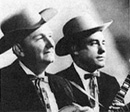
Guitarist Lester Flatt and banjo player Earl Scruggs founded the American bluegrass band, The Foggy Mountain Boys. It is viewed by music historians as one of the premier bluegrass groups in the history of the genre. The band was originally formed in 1948 by Flatt, who had been a member of Bill Monroe's bluegrass band. Flatt brought Scruggs with him shortly after leaving Monroe.
Flatt and Scruggs and The Foggy Mountain Boys (in various forms and line-ups) recorded and performed together up until 1969. The Foggy Mountain Boys are seen as one of the landmark bands in bluegrass music. Although it featured various casts, during the years of The Lester Flatt and Earl Scruggs Grand Ole Opry Show, notably sponsored by grain and flour producer Martha White, the band showcased fiddle player Paul Warren, a master player both Old-Time and Bluegrass fiddling styles, whose technique reflected all qualitative aspects of 'the bluegrass breakdown' and fast bowing style; dobro player Uncle Josh Graves, an innovator of the advanced playing style of the instrument now used in the genre, stand-up bass player Cousin Jake Tullock, and mandolinist Curly Seckler. Scruggs is widely considered the most influential player of the bluegrass banjo who ever lived.
Playing since the age of five, Scruggs gained his initial spotlight when he played briefly with Bill Monroe, considered by many as the father of bluegrass music. His lightening fast syncopation and virtuosity wove themselves into an innovative three finger picking style that became the standard for mastering the instrument.
The Four Seasons
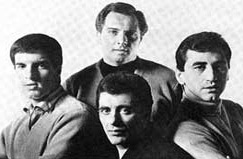
Monday, July 10, 1967
Tuesday, August 8, 1967
Monday, July 29, 1968
Sunday, August 10, 1969
Monday, September 8, 1969
Saturday, July 4, 1970
Saturday, August 8, 1970
Sunday, August 30, 1970
The Four Seasons were the first group ever to use falsetto as the lead. With their new hit status, and Valli's three and a half octave spanning voice, the Four Seasons soon had yet another number one hit with "Big Girls Don't Cry" and then again with "Walk Like a Man." The Four Seasons were hot, and they just kept on going. Many have referred to them as "The East Coast Beach Boys," a title that certainly has merit, as the Four Seasons and the Beach Boys were the only two big singing groups at the time from the United States, and they both held their own against the British Invasion. In 1967 Frankie Valli began recording as a solo artist, while still remaining with the Four Seasons.
Source: allsands.com/
Photo Source: musicmoz.org/
A memory from Rick Hesel:
I can't remember the year, but probably one of the 1970 concerts, Frankie Valli lost his voice and at the last minute had to cancel a performance on a Saturday night. The Saturday night tickets were the most expensive (I think at the time $4.75) and the audience was especially demanding. SinJIn went on stage to announce the cancellation, and promised refunds would be sent by mail to ticket holders. That promise did not satisfy the audience. A mob appeared outside the box office with fists pounding on the plywood walls demanding cash refunds. Of course we didn't have the cash on hand so we closed the box office. I and the box office staff were cowering under the ticket shelves trying to not make any noise so that the crowd would think we weren't there. We were terrified. I can remember hushing the staff as the profanities flew outside the box office. As i recall the crowd proved so unruly we had to call in the Lambertville police and/or the NJ state police.
Rick Hesel, Treasurer
The Four Tops
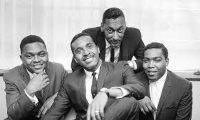
Saturday, August 1, 1970
The Four Tops started their musical career as the Four Aims at a house party in Detroit in 1964. Members included Levi Stubbs, Abdul "Duke" Fakir, Renaldo "Obie" Benson and Lawrence Payton. They changed the group's name to The Four Tops to avoid confusion with a popular group of the day, the Ames Brothers. A smooth lounge act, the Tops stuck to standards and ballads and recorded for at least four other record companies before Berry Gordy signed them to Motown in 1963.
Their breakthrough hit, "Baby I Need Your Loving," and was followed by greater success with "I Can't Help Myself (Sugar Pie, Honey Bunch)" in 1965, the Tops' first #1 hit. Other hits were released during this period, including "It's the Same Old Song," "Shake Me, Wake Me (When It's Over)" and "Loving You Is Sweeter Than Ever." "Reach Out I'll Be There," released in 1966, was the group's biggest Motown hit. It could also be considered The Four Tops' theme song, as it musically expressed the feelings of solidarity and brotherly love group members felt for one another.
The Four Tops continued to churn out hits for Motown with releases that included "Standing in the Shadows of Love" and "Bernadette," both of which placed well on the R&B and pop charts. The quartet performed together for more than forty years, without a single personnel change, separated only by the death of group member Lawrence Payton in 1997.
Inducted into the Rock and Roll Hall of Fame in 1990, the Tops also received the Grammy Lifetime Achievement Award and were ranked #79 on Rolling Stone's list of the 100 Greatest Artists of All Time.
Leslie Gore
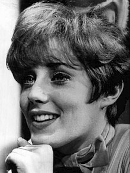
At the age of 16, Leslie Gore recorded the pop hit "It's My Party," a US number one in 1963. She followed it up with ten further Billboard top 40 hits including "Judy's Turn to Cry" and "You Don't Own Me".
Gore later worked as an actress and television personality. She composed songs with her brother, Michael Gore, for the 1980 film Fame, for which she was nominated for an Academy Award. She hosted several editions of the LGBT-oriented public television show, In the Life, on American TV in the 2000s.
Gore's second studio album, Lesley Gore Sings of Mixed-Up Hearts, was released in November 1963. Although musically superior to her debut album I'll Cry If I Want To, it was met with mediocre sales. "She's A Fool", "You Don't Own Me", and an early rendition of "Sunshine, Lollipops and Rainbows" are featured in this album.
When she recorded her version of "It's My Party" with Quincy Jones in 1963, she was a junior in high school. It became a number-one, nationwide hit. Gore's version was certified as a Gold record. It also marked the beginning of a time when fans would show up on her front lawn.
Gore performed on two consecutive episodes of the Batman television series (January 19 and 25, 1967), in which she guest-starred as Pussycat, one of Catwoman's minions.
Robert Goulet
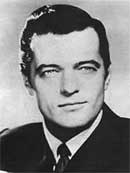
Robert Gerard Goulet was born in Lawrence, Massachusetts on November 26, 1933, to a family of French-Canadian origin. After hearing his son sing "Lead Kindly Light", in their church hall, his father told him, "I'm proud of you, son". A few weeks later, his father, lying on his death bed, called Robert to his side and told him the Lord had given him a beautiful voice and he must go and sing. His father died when Robert was 13 and he moved to Edmonton, Canada, a year later.
Goulet won a singing scholarship to the Royal Conservatory of music in Toronto and, in 1951, made his concert debut at Edmonton in George Frideric Handel's "Messiah". Goulet was also a DJ on Canada's CKUA in Edmonton for two years.
In 1960, he landed one of his biggest roles as "Lancelot" in Broadway's "Camelot", opposite Richard Burton and Julie Andrews. He received a Tony award in 1968 for his role in "Happy Time". He and his first wife, Louise Longmore, had one daughter, Nicolette Goulet (aka Nikki). His second wife, actress and singer Carol Lawrence, produced two sons, Christopher and Michael. In 1982, with Glenn Ford giving the bride away, he was married in Las Vegas to Vera Goulet (aka Vera Novak), a Yugoslavian-born writer, photographer and artist. Mr. Goulet performed at the White House for three presidents, as well as a command performance for Queen Elizabeth II.
He also toured in several musicals, including "Camelot" as Sir Lancelot, "Man of La Mancha," Rodgers and Hammerstein's "South Pacific," Rodgers and Hammerstein's "Carousel," where he portrayed Billy Bigelow, a role he also played in 1967 in a made-for-television adaptation of the musical. This version aired only a year after the first television telecast of the 1956 film version. He also starred in a 1966 television version of "Brigadoon," which won several Emmy Awards, and "Kiss Me Kate" in 1968, opposite his then-wife Carol Lawrence.
On September 30, 2007, he was hospitalized in Las Vegas. Goulet died on October 30, 2007 at Cedars-Sinai Medical Center.
Lena Horne
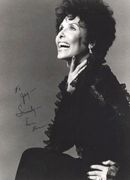
Through the 1950s and '60s, Horne came into her own as a consummate performer and an important fixture of the American cultural landscape. A 1952 Down Beat review states "Horne has rightfully gained a top niche in show business—one which will stand up for many years to come." She starred in several shows, including the Broadway musical "Jamaica," recorded albums, and was in demand at nightclubs and stages around the world, appearing with such notable talents as Tony Bennett, Billy Eckstine and Harry Belafonte.
Lena Horne was a singer, actress and Civil Rights Activist who first established herself as an accomplished live singer and then transitioned into film work. She signed with MGM studios and became known as one of the top African American performers of her time, seen in such films as Cabin in the Sky and Stormy Weather. She was also known for her work with civil rights groups and refused to play roles that stereotyped African American women, a stance that many found controversial. After some time out of the limelight during the '70s, she made a revered, award-winning comeback with her 1981 show Lena Horne: The Lady and Her Music.
Lena Mary Calhoun Horne was born on June 30, 1917, in Brooklyn, New York, the daughter of a banker/professional gambler and an actress.At age 16, Horne dropped out of school and began performing at the Cotton Club in Harlem. After making her Broadway debut in the fall 1934 production "Dance With Your Gods," she joined Noble Sissle & His Orchestra as a singer, using the name Helena Horne.
Horne was placed in a number of films, such as Swings Cheer (1943) and Broadway Rhythm (1944), where she would only appear in singing scenes as an individual performer, scenes that could be cut for Southern audiences. Nonetheless, she was able to land lead roles in two 1943 movies with an ensemble African American cast, Cabin in the Sky and Stormy Weather. Horne's rendition of the title song for Weather would become her signature tune, one she would perform countless times over the decades via her live performances.
After having been a featured player in the 1969 screen western Death of a Gunfighter, Horne made her final film appearance in the 1978 movie The Wiz.
In 1981, the singer/actress made a triumphant return to Broadway with her one-woman show Lena Horne: The Lady and Her Music. The acclaimed, emotionally searing production ran on Broadway for 14 months, then toured in the United States and abroad. The show won a Drama Desk Award and a special Tony, as well as two Grammys for its soundtrack.
Horne died of heart failure on May 9, 2010, in New York City.
Jay and the Americans
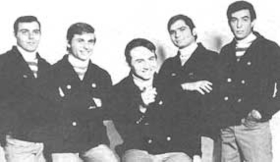
Jay and the Americans was a pop music group popular in the 1960s. They were discovered while performing in student venues at New York University in the late 1950s. They auditioned for Lieber and Stoller and first hit the Billboard charts in 1962 with the tune She Cried; its highest charting was #5.
The group initially consisted of Howard Kane (né Kirschenbaum), John Traynor, Kenny Vance (né Rosenberg), and Sandy Yagoda. John Traynor left the group after the first single, and Jay Black (né David Blatt) sang lead for the rest of the group's existence. Other notable hits for the group were Come a Little Bit Closer in 1964, which hit #3, and Cara Mia in 1965, which hit #4.
In 1968, they performed a remake of a song that The Drifters first popularized: This Magic Moment. This was the group's last Top Ten hit and they broke up soon after. Jay Black continued performing on into the 1980s as Jay and the Americans with a variety of musicians, including Walter Becker and Donald Fagen, who would later found Steely Dan.
The group reunited in the 1990s for special performances, most notably the 45 Years of Motown special on PBS.
The King Family

Originally christened "America's First Family of Song" in the 1960's, The King Family, comprised of "big band era" greats The King Sisters, guitar virtuoso Alvino Rey and the 32 sisters, brothers, husbands, wives, aunts, uncles and children that made up their extended musical family, catapulted to fame following just two dazzling appearances on ABC-TV's The Hollywood Palace to become one of the most popular and beloved television, recording and concert acts of the 1960's and 70's.
Acclaim from audiences and critics alike for their 'Palace' appearances led to their first headlining television special, The Family is King, in 1964. That special's ratings-topping popularity landed the musical group its own weekly ABC-TV showcase, The King Family Show, during 1965 and 1966. An audience favorite, the series featured the entire musical family in various groupings --The King Sisters - who'd already established themselves as one of the nation's top vocal groups, and the next generation's contingent The King Cousins, featuring Tina Cole who went on to star as "Katie Douglas" on CBS' My Three Sons, along with the irrepressible King Kiddies whose musical talent and effortless comedic timing were a staple of these tune-filled hours.
B.B. King
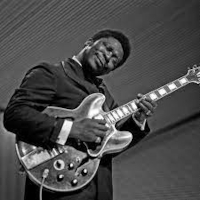
Sunday, July 19, 1970
For more than half a century, Riley B. King, better known as B.B. King, has defined the blues for a worldwide audience. Since he started recording in the 1940s, he has released over fifty albums, many of them classics. He was born September 16, 1925, on a plantation in Itta Bena, Mississippi, near Indianola. In his youth, he played on street corners for dimes, and would sometimes play in as many as four towns a night. In 1947, he hitchhiked to Memphis, TN, to pursue his music career.
B.B.'s first big break came in 1948 when he performed on Sonny Boy Williamson's radio program on KWEM out of West Memphis. This led to a ten-minute spot on black-staffed and managed Memphis radio station WDIA. Soon B.B. needed a catchy radio name. What started out as Beale Street Blues Boy was shortened to Blues Boy King, and eventually B.B. King.
In the mid-1950s, while B.B. was performing at a dance in Twist, Arkansas, a few fans became unruly. Two men got into a fight and knocked over a kerosene stove, setting fire to the hall. B.B. raced outdoors to safety with everyone else, then realized that he left his beloved $30 acoustic guitar inside, so he rushed back inside the burning building to retrieve it, narrowly escaping death. When he later found out that the fight had been over a woman named Lucille, he decided to give the name to his guitar to remind him never to do a crazy thing like fight over a woman. Ever since, each one of B.B.'s trademark Gibson guitars has been called Lucille.
Soon after his number one hit, "Three O'Clock Blues," B.B. began touring nationally. In 1968, B.B. played at the Newport Folk Festival and at Bill Graham's Fillmore West on bills with the hottest contemporary rock artists of the day who idolized B.B. and helped to introduce him to a young white audience. In "69, B.B. was chosen by the Rolling Stones to open 18 American concerts for them; Ike and Tina Turner also played on 18 shows.
B.B. was inducted into the Blues Foundation Hall of Fame in 1984 and into the Rock and Roll Hall of Fame in 1987. B.B. continued to tour extensively, averaging over 250 concerts per year around the world. B.B.'s most popular crossover hit, 1970's "The Thrill Is Gone," went to #15 pop. B.B. passed away in his sleep on May 14th 2015.is sleep on May 14th 2015.
Gladys Knight and the Pips
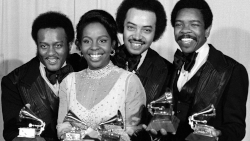
Gladys Knight & the Pips were an American R&B/soul/funk family music group from Atlanta, Georgia, that remained active on the music charts and performing circuit for over three decades.
Starting out as simply The Pips in 1952, derived from a cousin's nickname, the founding members were Gladys Knight, brother Merald "Bubba" Knight, sister Brenda Knight and cousins Eleanor Guest and William Guest. After a couple of years performing in talent shows, the group signed with Brunswick Records in 1957, recording a couple of singles that failed to chart. The group's first hit single, "Every Beat of My Heart." After the single was released on three different labels, they changed their name to Gladys Knight & the Pips in 1961. Langston George left the same year and Gladys Knight left in 1962 to start a family with musician Jimmy Newman. Knight rejoined in 1964 and this lineup continued until the group's disbandment in 1989.
The group reached commercial success after signing with Motown Records in 1966. After a year and a half, the group recorded the first hit single version of "I Heard It Through the Grapevine" in 1967, which led to several hit singles for Motown's Soul Records label, including their Grammy-winning and number-one hit single, "Midnight Train to Georgia". In 1974, they recorded the soundtrack to the successful film Claudine with producer Curtis Mayfield. Contractual difficulties with their labels forced the group to record side projects from 1977 until 1980 when they signed with Columbia Records. In 1989, the group disbanded with the Pips retiring and Knight embarking on a successful solo career.
Gladys Knight & the Pips are multiple Grammy and American Music Award winners and are inductees into the Rock and Roll Hall of Fame and the Vocal Group Hall of Fame in 1996 and 2001 respectively.
The Lemon Pipers
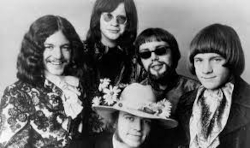
The Lemon Pipers were a 1960s American psychedelic rock band known chiefly for their song "Green Tambourine", which reached No. 1 in the United States in 1968. The song has been credited as being the first bubblegum pop chart-topper.
The Lemon Pipers comprised drummer William (Bill) E. Albaugh, guitarist Bill Bartlett, vocalist Dale "Ivan" Browne, keyboardist Robert G. Nave, and bassist Steve Walmsley, who replaced the original bass guitarist Bob "Dude" Dudek.
The band was formed in 1966 by student musicians from Oxford, Ohio, who had played the college bars with their previous groups. The band played a mixture of blues, hard rock and folk rock, with a few covers from The Byrds and The Who. The original band existed as a quartet, and then gained notoriety by reaching the finals in the Ohio Battle of the Bands at the Cleveland Public Auditorium in 1967, losing out to the James Gang.
The band then recruited Miami University student Browne as frontman, and also engaged Ohio music industry impresario Mark Barger, who steered the Lemon Pipers to Buddah Records. The group began playing larger auditorium and concert hall venues around the US, including an appearance at Bill Graham's Fillmore West in San Francisco. Buddah's plans for the group focused on bubblegum pop rather than rock music, and the Lemon Pipers joined a stable already containing Ohio Express and the aptly named 1910 Fruitgum Company.
The Lemon Pipers' evolution from 1960s rock music into a gold-record bubblegum band created what Nave has described as "the duality of the Lemon Pipers": "We were a stand-up rock 'n' roll band, and then all of a sudden, we're in a studio, being told how to play and what to play." The band left the Buddah label in 1969 and later dissolved.
Trini Lopez
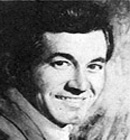
Trini Lopez, was a guitarist and singer whose renditions of "If I Had a Hammer" and "Lemon Tree" climbed the charts in the 1960s and an actor who appeared in films including The Dirty Dozen.
Born Trinidad Lopez III in Dallas, Texas to parents who were from Mexico, Lopez began his music career at the age of 15, when he formed his first band. One of his groups, The Big Beats, signed to Columbia, before he struck out on his own as a solo artist and he signed to King Records in the late Fifties. After releasing several singles that failed to chart, he left the label and soon after began a residency at Los Angeles club PJ's. Frank Sinatra caught Lopez performing during his residency and in 1963, Sinatra signed Lopez to Reprise Records.
Lopez's 1963 Reprise debut, a live album called Trini Lopez at PJ's, produced several hits, including his rendition of "If I Had a Hammer," written by Pete Seeger and Lee Hays that hit Number One and eventually achieved gold status, and his version of the Will Holt-penned "Lemon Tree." The album also included his take on the traditional Mexican song, "La Bamba." He continued to release albums and hits through the Sixties as well as performed nightclubs throughout the U.S., including regular stints as a Las Vegas headliner.
Alongside his music career, Lopez also pursued acting. In 1967, he starred alongside an ensemble cast that included Charles Bronson, Ernest Borgnine, John Cassavetes, Lee Marvin, Donald Sutherland and Telly Savalas in Robert Aldrich's The Dirty Dozen. Beyond the big screen, he appeared on several TV shows, including Adam-12. He died of complications from COVID-19 in 2020. He was 83.
The Lovin' Spoonful
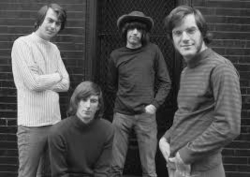
Sunday, June 11, 1967
The band had its roots in the folk music scene based in the Greenwich Village section of lower Manhattan during the early 1960s. John B. Sebastian, the son of classical harmonicist John Sebastian, grew up in the Village in contact with music and musicians, including some of those involved with the American folk music revival of the 1950s through the early 1960s. Sebastian formed the Spoonful with guitarist Zal Yanovsky from a bohemian folk group playing local coffee houses and small clubs called The Mugwumps, two other members of which, Cass Elliot and Denny Doherty, later formed half of the Mamas & the Papas. The formation of the Lovin' Spoonful during this period was later described in the lyrics of the Mamas & the Papas' name dropping 1967 top ten hit, "Creeque Alley."
The group made its first recordings for Elektra Records in early 1965, and agreed in principle to sign a long-term deal with Elektra in exchange for a $10,000 advance. However, Kama Sutra Records had an option to sign the Lovin' Spoonful as recording artists as part of a previously signed production deal, and Kama Sutra exercised the option upon learning of Elektra's intent to sign the band. The four tracks recorded for Elektra were released on the 1966 various artists compilation LP What's Shakin' after the band's success on Kama Sutra.
Johnny Mathis
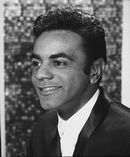
The fourth of seven children, John Royce Mathis was born on September 30, 1935 in Gilmer, Texas to Clem and Mildred Mathis. As a small boy, the family moved to Post Street in San Francisco. It was there that he learned an appreciation of music from his father who taught him his first song, "My Blue Heaven."
In 1958, Johnny's Greatest Hits was released. It began a "Greatest Hits" tradition copied by every record company since then. Johnny's Greatest Hits went on to become one of the most popular albums of all time and spent an unprecedented 490 continuous weeks (almost ten years) on the BILLBOARD Top Albums Chart.
Source: johnnymathis.com/
Photo Source: retrojeunesse60.com/
The Glenn Miller Orchestra
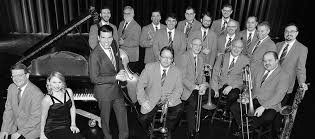
With its unique jazz sound, the Glenn Miller Orchestra is considered to be one of the greatest bands of all time, and the most popular and sought after big band in the world today for both concert and swing dance engagements. The present Glenn Miller Orchestra was formed in 1956 and has been touring consistently since, playing an average of 300 live dates a year all around the world.
Alton Glenn Miller was born in Clarinda, Iowa on March 1, 1904. He toured with several orchestras and ended up in Los Angeles where he landed a spot in Ben Pollack's group. Arriving in New York City, he soon sent for, and married his college sweetheart, Helen Burger in 1928, and for the next three years, earned his living as a free-lance trombonist and arranger.
It is said that Miller could never remember precisely the moment he decided to emphasize his new reed section sound produced by the clarinet holding the melodic line while the tenor sax plays the same note, and supported harmonically by three other saxophones.
Formed in March 1938, the Glenn Miller Orchestra soon began breaking attendance records all up and down the East Coast. The Orchestra was invited by ASCAP to perform at Carnegie Hall with three of the greatest bands ever, Paul Whiteman, Fred Waring and Benny Goodman.
There were record-breaking recordings, as well, such as "Tuxedo Junction", which sold 115,000 copies in the first week. "In the Mood," and "Pennsylvania 6-5000?."
In the Fall of 1944, the band was scheduled to be sent on a six-week tour of Europe and would be stationed in Paris during that time. Miller decided to go ahead, in order to make the proper arrangements for the group's arrival. And so, on December 15th, Glenn Miller boarded a transport plane to Paris, never to be seen again.
The New Vaudeville Band
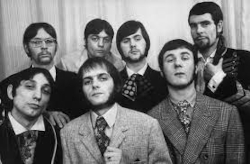
The New Vaudeville Band was a group created by songwriter Geoff Stephens in 1966 to record his novelty composition "Winchester Cathedral," a song inspired by the dance bands of the 1920s and a Rudy Vallee megaphone-style vocal. To his surprise, the song became a transatlantic hit that autumn, reaching the Top 10 in the United Kingdom and rising to #1 in the United States. The record sold over three million copies worldwide, earning the RIAA certification of gold disc status.[2] The track also won a Grammy Award for Best Contemporary Song in 1967.
The lead vocal was sung by John Carter, formerly of The Ivy League, who had sung on the demo of the song, which Stephens decided to keep for the commercial release. Initially a studio group composed of session players, Stephens quickly assembled a permanent group to continue recording and to play live shows. The New Vaudeville Band placed several singles in the US and UK top 40 through 1967 before dissolving. The group has been periodically revived since, without Stephens' participation.
"Green Street Green" was the band's final hit. A further single ("The Bonnie and Clyde") was issued in 1968, but flopped. After a cameo appearance in the film "The Bliss of Mrs Blossom," the band quietly broke up.
Wayne Newton
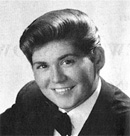
Wayne Newton recorded for the 1960s album market and scored several hits during that time, but became most renowned for his connections to Las Vegas, where he commanded up to $1 million per month at his peak and invested heavily into the city's real estate.
Born in 1942 in Roanoke, Virginia, Newton began singing professionally at the age of six, and formed a rockabilly duo with his brother Jerry after the family moved to Phoenix in the mid-'50s. The pair was featured on a local TV show while still in their pre-teens, and moved to Las Vegas in the early '60s for a five-year engagement. Newton's first three singles charted well, led by 1963's Top 20 hit "Danke Schoen" (a staple of Newton's act for the rest of his life), but the rest of the '60s saw only one upper-reaches chart entry, "Red Roses for a Blue Lady" (the corresponding album was his only Top 20 entry).
The beginning of the '70s saw Newton recording for a new label, Chelsea, and though it provided him with the biggest hit of his life, the number four "Daddy Don't You Walk So Fast," Newton began focusing more and more on his Las Vegas show after his voice began to lower. Newton became the king of Las Vegas by the 1980s; he won the Entertainer of the Year award more than any other performer, set a record as the highest-paid nightclub performer in history, and bought the Aladdin casino.
Despite the acres of fame and riches, Newton was forced to file bankruptcy in the early '90s. Several multi-million dollar performances around the world cured his financial blues, and in no time he was back on top. Newton has been cameo featured in several films, including The Adventures of Ford Fairlane and Vegas Vacation. ~ John Bush, All Music Guide
Source: music.yahoo.com/
Jane Powell
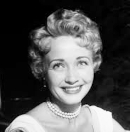
Powell was born Suzanne Lorraine Burce, the only child born to Paul E. Burce (a Wonder Bread employee) and Eileen Baker Burce (a housewife), on April 1, 1929, in Portland, Oregon. Powell began dance lessons at the age of two. In an attempt to liken her appearance to Shirley Temple, Powell's mother took her to get her first perm the same year she began dance lessons.
At 12, Powell had her career taken over by a local promoter, Carl Werner, who helped her get selected as the Oregon Victory Girl. During her time as the Oregon Victory Girl, Powell had two weekly radio shows. During the first, she sang with an organ accompaniment, and during the second, she sang with an orchestra and other performers. At one time she was billed singing alongside Johnnie Ray, also from Oregon. She had attended Beaumont Grade School in Portland.
In summer 1943, Paul and Eileen Burce took their daughter on vacation to Hollywood. There, she appeared on Janet Gaynor's radio show Hollywood Showcase: Stars over Hollywood. The show was a talent competition, and among the other contestants were Kathie Lee Gifford's mother, Joan Epstein. Powell won the competition, and soon auditioned for Louis B. Mayer at MGM, as well as for David O. Selznick. Without even taking a screen test, Powell was then signed to a seven-year contract with MGM. Within two months, Powell was loaned to United Artists for her first film, "Song of the Open Road." Powell's character in "Song of the Open Road" was named Jane Powell, and her stage name was taken from this.
In 1954, Powell starred in Seven Brides for Seven Brothers, opposite Howard Keel, which gave her the opportunity to play a more mature character than in previous films.
Known mainly for musical comedy, Powell appeared in a rare dramatic role in The Female Animal from Universal Pictures in 1958, which turned out to be the final film of co-star Hedy Lamarr. In 1956, Powell performed the song "I'll Never Stop Loving You" at the 28th Academy Awards.
Her roles include the touring productions of "Unsinkable Molly Brown," "Most Happy Fella," "The Boy Friend," "Brigadoon," "The Sound of Music," "Oklahoma!," "My Fair Lady," "Carousel," "Meet Me in St. Louis," "Seven Brides for Seven Brothers," "Peter Pan," and "Irene."
Gary Puckett and the Union Gap
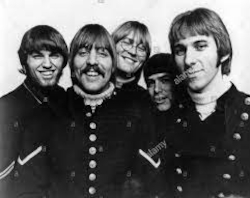
Gary Puckett & The Union Gap (initially credited as The Union Gap featuring Gary Puckett) was an American pop rock group active in the late 1960s. The group, formed by Gary Puckett, Gary 'Mutha' Withem, Dwight Bement, Kerry Chater and Paul Wheatbread, who eventually named it The Union Gap, had its biggest hits with "Woman, Woman," "Young Girl," "Lady Willpower," "Over You," "Don't Give In to Him," and "This Girl Is a Woman Now." The members featured costumes that were based on the Union Army uniforms worn during the American Civil War.
The group's lead singer, Gary Puckett, was born on October 17, 1942, in Hibbing, Minnesota, and grew up in Yakima, Washington. He began playing guitar in his teens, and attended college in San Diego, California. There, he dropped out and played in several local bands before joining the Outcasts, a local hard rock group, which produced two singles, but they were unsuccessful.
Following the breakup of the Outcasts, Puckett formed a new group he called Gary and the Remarkables. In 1966, the band toured the Pacific Northwest. Under manager Dick Badger, the team was renamed The Union Gap in early 1967, and its members outfitted themselves in Union Army-style Civil War uniforms as a visual gimmick.
The band recorded their first single "Woman, Woman." Although the band never had a Billboard No. 1 record in the United States, "Young Girl" hit No. 1 on the UK singles chart.
The band, however, wanted to write and produce its own material, and Puckett resented singing the power ballads written by Fuller. In 1969 Fuller prepared a 40-piece studio orchestra to record a new song he had written, but Puckett and the group refused to record it, the session was canceled, and Fuller never again worked with the group. In 1970 Puckett began recording as a solo act, but with limited success; the Union Gap remained his live backing band until they were dismissed.
Boots Randolph
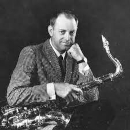
Randolph was born in Paducah, Kentucky, United States, and raised in Cadiz, Kentucky. As a child, he learned to play music with his family's band. He was not sure where or why he acquired the nickname "Boots," although it may have served to avoid confusion since his father and he had the same first name. He started out playing the ukulele and trombone, but switched to tenor saxophone when his father unexpectedly brought one home.
During his forty-plus year career, Randolph performed in hundreds of venues alongside many artists in pop, rock, jazz, and country music. He played on many recording sessions with Elvis Presley and also performed on soundtracks for a number of Presley's motion pictures, one popular song being "Return to Sender."
In 1977, Randolph opened a successful club of his own in Nashville's Printer's Alley. He also frequently appeared on the television program Hee Haw, and was a member of the Million Dollar Band.
On July 3, 2007, Randolph died at Skyline Medical Center in Nashville, Tennessee.
Lou Rawls
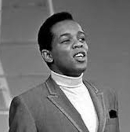
Sunday, August 4, 1968
Rawls was born on 1st December 1933 in Chicago, Illinois. His father abandoned his family and Lou was raised by his grandmother. His first meeting with music was when he was seven years old, in a Baptist church choir. He was mostly influenced by the Chicago Regal theatre where he had the opportunity to see the best in black entertainment. Billy Eckstine and Arthur Prysock were only two of the best that Lou saw. He and classmate, Sam Cooke, would harmonize in the school lavatory. He graduated from Dunbar Tech. School and joined the touring gospel singing group, the Pilgrim Travelers.
Rawls was first noticed by Capitol Records producer Nick Benet after noticing his four octave range while performing at a Pandora's Los Angeles coffee shop. He went on to perform at a number of LA clubs and later made his debut at the Hollywood Bowl in 1959 with Dick Clark. He went solo in 1964 and has won four Grammys.
In the mid 70s, he joined the Anheuser Busch Brewery as a corporate spokesman. Since 1980, he has presented a series of world wide concerts for American military bases that were co-sponsored by Anheuser Busch, the USO, and the US Dept. Of Defense. During Christmas of 1983, he toured US bases in the Phillipines, Korea and Japan. He has raised hundreds of millions of dollars for black colleges and, every year, he sponsors a celebrity golf tournament in LA to raise money for the United Negro College Fund. South Wentworth Street in Chicago was renamed Lou Rawls Drive in his honor. The talented Rawls is also the singing voice of the animated fickle feline "Garfield." He died January 6, 2006 in Los Angeles, CA.
Sam & Dave
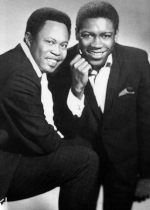
Sam & Dave were an American soul and R&B duo who performed together from 1961 until 1981. The tenor (higher) voice was Sam Moore (born 1935) and the baritone/tenor (lower) voice was Dave Prater (1937-1988).
Nicknamed "Double Dynamite", "The Sultans of Sweat", and "The Dynamic Duo" for their gritty, gospel-infused performances, Sam & Dave are considered one of the greatest live acts of the 1960s. Many subsequent musicians have named them as an influence, including Bruce Springsteen, Al Green, Tom Petty, Phil Collins, Michael Jackson, Steve Van Zandt, Elvis Costello, The Jam, Teddy Pendergrass, Billy Joel, and Steve Winwood. The Blues Brothers, who helped create a resurgence of popularity for soul, R&B, and blues in the 1980s, were influenced by Sam & Dave – their biggest hit was a cover of "Soul Man", and their act and stage show contained many homages to the duo.
According to the Rock & Roll Hall of Fame, Sam & Dave were the most successful soul duo and brought the sounds of the black gospel church to pop music with their call-and-response records. Recorded primarily at Stax Records in Memphis, Tennessee, from 1965 through 1968, these included "Soul Man", "Hold On, I'm Comin'", "You Don't Know Like I Know", "I Thank You", "When Something is Wrong with My Baby", "Wrap It Up", and many other Southern Soul classics. Except for Aretha Franklin, no soul act during Sam & Dave's Stax years (1965-1968) had more consistent R&B chart success, including 10 consecutive top 20 singles and three consecutive top 10 LPs. Their crossover charts appeal (13 straight appearances and two top 10 singles) helped to pave the way for the acceptance of soul music by white pop audiences, and their song "Soul Man" was one of the first songs by a black group to top the pop charts using the word "soul", helping define the genre. "Soul Man" was a number one Pop Hit (Cashbox: November 11, 1967) and has been recognized as one of the most influential songs of the past 50 years by the Grammy Hall of Fame, the Rock & Roll Hall of Fame, Rolling Stone magazine, and RIAA Songs of the Century. "Soul Man" was featured as the soundtrack and title for a 1986 film and also a 1997-1998 television series, and Soul Men was a 2008 feature film.
Sam & Dave are inductees in the Rock and Roll Hall of Fame, the Vocal Group Hall of Fame, the Memphis Music Hall of Fame, and the Rhythm & Blues Music Hall of Fame. They won a Grammy Award for "Soul Man" and they received the Grammy Lifetime Achievement Award in 2019. Rolling Stone ranked Sam & Dave No. 14 its list of the 20 Greatest Duos of All Time.
Buffy Sainte-Marie
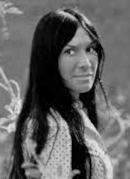
Tuesday, July 22, 1969
Buffy Sainte-Marie, byname of Beverly Sainte-Marie, (born February 20, 1941/42, Piapot Reserve, Saskatchewan, Canada), Canadian-born American singer-songwriter, guitarist, political activist, and visual artist known especially for her use of music to promote awareness of issues affecting Native Americans.
Orphaned as an infant in Canada when her mother, a Plains Cree, died in an automobile accident, Sainte-Marie was adopted by an American couple of Mi'kmaq ancestry and raised in Massachusetts and Maine. She played piano as a young child, and as a teenager she took up guitar and started composing her own songs. She attended the University of Massachusetts at Amherst, where she studied philosophy (with an Asian focus) and education. She received a bachelor's degree in 1962. Sainte-Marie began performing her songs in coffee houses during her college years, and after graduation she moved to New York City to take part in the bohemian arts scene of Greenwich Village.
Sainte-Marie's breakthrough came in 1963, when critic Robert Shelton of The New York Times praised her as "one of the most promising new talents on the folk scene." The review led to a contract with Vanguard Records and to the release of her first album, It' My Way! (1964). The recording contained a number of songs that became stylistic benchmarks in the development of her musical corpus. "Now That the Buffalo's Gone" addressed Native American land rights and intercultural relationships. The song featured Sainte-Marie's distinctive tremolo vocal technique. Her song "Universal Soldier" arose as an anti-Vietnam War anthem not only through her own performances but also through cover recordings and performances by Scottish singer-songwriter Donovan.
Sainte-Marie's second release, Many a Mile (1965), contained "Until It's Time for You to Go," a love song covered by a number of singers including, among others, Bobby Darin, Barbra Streisand, Neil Diamond, and Elvis Presley. Other important songs and albums of the 1960s included "My Country 'Tis of Thy People You're Dying," a poignant commentary on the exclusion of Native Americans from mainstream American history. In the 1970s she contributed the title song to the film Soldier Blue (1970) and released three more albums—Buffy (1974), Changing Woman (1975), and Sweet America (1976)—before taking a break from recording that lasted some 15 years.
John Sebastian
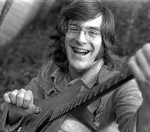
John Sebastian's group The Lovin' Spoonful played a major role in the mid-'60s rock revolution, but what leader, singer and songwriter Sebastian had in mind was actually a counter-revolution. "We were grateful to the Beatles for reminding us our rock & roll roots," John explains, "but we wanted to cut out the English middlemen, so to speak, and get down to making this new music as an 'American' band."
You know the songs by heart: "Do You Believe In Magic?" "You Didn't Have To Be So Nice." "Daydream." "Younger Girl." "Did You Ever Have To Make Up Your Mind?" "Summer In The City." "Rain On The Roof." "Nashville Cats." "Six O'Clock." "Darling Be Home Soon." "Younger Generation." These songs did more than simply answer the British invasion, they carried the musical tradition into the future.
Sebastian was born March 17, 1944 in New York City. His father was a noted classical harmonica player and his mother a writer of radio programs. Regular visitors to the family's Greenwich Village home included Burl Ives and Woody Guthrie. Making his bow as a member of the Even Dozen Jug Band, his skills on guitar, harmonica and autoharp soon made him a sought-after accompanist on the Village folk scene.
After leaving the Lovin' Spoonful, he bore witness to another turn of the musical zeitgeist with his performances at massive festivals like Woodstock and its English equivalent the Isle of Wight. He had been involved in music for films (most notably Francis Ford Coppola's You're A Big Boy Now and Woody Allen's What's Up Tiger Lily) and Broadway, but when producers of a TV show called Welcome Back Kotter commissioned a theme song in 1976, Sebastian's "Welcome Back" became a chart-topping solo record.
Throughout the '70s and '80s he continued to record and tour. Thankfully John's induction into the Rock 'n Roll Hall of Fame in 2000 hasn't slowed him down.
Doc Severinsen
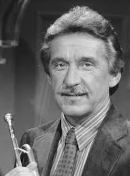
Saturday, July 18, 1970
Severinsen's accomplishments began in his hometown of Arlington, Oregon, population: 600. Carl H Severinsen was born on July 7th, 1927, and was nicknamed "Little Doc" after his father, Dr. Carl Severinsen a dentist. Little Doc had originally wanted to play the trombone. But Doc Sr., a gifted amateur violinist, urged him to follow in his father's footsteps. The Doc Jr. insisted on the trombone, which turned out to be unavailable in tiny Arlington's music store. And so, a trumpet it would be. A week later, with the help of his father and a manual of instructions, the seven-year-old was so good that he was invited to join the high school band. At the age of twelve, Little Doc won the Music Educator's National Contest and, while still in high school, was hired to go on the road with the famous Ted Fio Rito Orchestra. However, his stay with the group was cut short by the draft. He served in the Army during World War II and following his discharge, landed a spot with the Charlie Barnett Band. When this band broke up, Severinsen toured with the Tommy Dorsey, then, the Benny Goodman bands in the late 40's.
After his days with Barnett and Dorsey, Doc arrived in New York City in 1949 to become a staff musician for NBC. After years of playing with NBC's many studio bands, Doc was invited to play a gig in the highly respected Tonight Show Band. The band leader at the time, Skitch Henderson, asked him to join that band in 1962 in the first trumpet chair. Five years later, Doc became the Music Director for The Tonight Show and the rest is history. His loyalty to Johnny Carson and Ed McMahon never faltered, and the warm camaraderie between the three was an enormous part of the show's success.
After the Carson show, Doc toured regularly with his own Big Band and continues to perform with symphony orchestras all over the country. Over the years has been Principal Pops Conductor with the Phoenix Symphony, the Milwaukee Symphony, the Minnesota Orchestra, the Colorado Symphony, the Pacific Symphony and the Buffalo Philharmonic.
Simon and Garfunkel
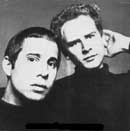
Simon and Garfunkel is the name of the American team of singer/songwriter Paul Simon and singer Art Garfunkel who recorded between 1964 and 1970. Their shimmering harmonies and acoustic concerts stood in stark contrast to the rest of the spectacle that marked rock acts of the '60s. They originally gained attention as a folk act (and some record stores continue to file their records under 'folk'), but it was Simon's songs, which frequently dealt with alienation and loneliness that seemed to strike a chord with an entire generation. By the time of the split, they were the most successful duo in pop music history. They re-united for a very successful 2003-2004 Simon & Garfunkel "Old Friends Tour."
Source: ckk.chalmers.se/
Nina Simone
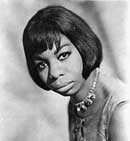
Nina Simone was one of the most extraordinary artists of the twentieth century, an icon of American music. She was the consummate musical storyteller, a griot as she would come to learn, who used her remarkable talent to create a legacy of liberation, empowerment, passion, and love through a magnificent body of works. She earned the moniker 'High Priestess of Soul' for she could weave a spell so seductive and hypnotic that the listener lost track of time and space as they became absorbed in the moment. She was who the world would come to know as Nina Simone.
When Nina Simone died on April 21, 2003, she left a timeless treasure trove of musical magic spanning over four decades from her first hit, the 1959 Top 10 classic "I Loves You Porgy," to "A Single Woman," the title cut from her one and only 1993 Elektra album. While thirty-three years separate those recordings, the element of honest emotion is the glue that binds the two together—it is that approach to every piece of work that became Nina's uncompromising musical trademark.
Nina Simone's best recorded work was issued on Philips during the mid-1960s. Here, as on Candix, she was arguably over-exposed, issuing seven albums within a three-year period. These records can be breathtakingly erratic, moving from warm ballad interpretations of Jacques Brel and Billie Holiday and instrumental piano workouts to brassy pop and angry political statements in a heartbeat. There's a great deal of fine music to be found on these, however. Simone's moody-yet-elegant vocals were like no one else's, presenting a fiercely independent soul who harbored enormous (if somewhat hard-bitten) tenderness.
Source: vh1.com/artists/
The Soul Survivors
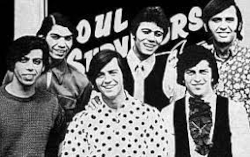
Kenny Jeremiah formed the soul music group, The Sould Survivors," in 1964 with brothers Richie Ingui and Charlie Ingui in New York City, three white guys who grew up listening to the R&B vocal groups of the 1950s. (The three were originally in a band called the Dedications, formed in 1962.) The Soul Survivors signed with Crimson Records in Philadelphia, a label co-owned by Philly DJ Jerry Blavat.
Blavat arranged for the group (which relocated to Philly after drawing large crowds there) to sing "Expressway," written and produced by the newcomers Gamble and Huff. The tune, with a "You've Lost That Lovin' Feeling" vibe to it, was released as a single in July 1967. It ultimately reached #4 in Billboard, and not surprisingly, #3 on the R&B chart.
The Soul Survivors broke up in 1970, although the Ingui brothers eventually performed under the name again, as well as with other groups. Jeremiah went on to record with the disco group Shirley &' Company, which topped the U.S. dance chart in 1975 with "Shame Shame Shame." He spent much of the 1980s on the popular Jersey Shore circuit and continued to perform in 2020.
Kenny Jeremiah died December 4, 2020 from the Covid-19 virus.
Spiral Starecase
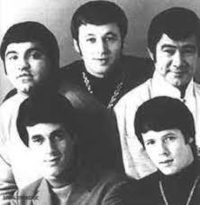
Spiral Starecase, who enjoyed a memorable 1969 hit single,"More Today Than Yesterday," was a peppy soul-based, horns-infused pop song written by lead singer, PatUpton. The group, formed in Sacramento, CA, and commonly misspelled as "Staircase," had two other minor hits.
Upton originally sang gospel music in a quartet with his brother. Having become a fan of rock music, he formed the Fydallions, originally an instrumental quartet, for an Air Force contest in 1964. Upon his discharge from the service, Upton—joined by saxophonist Dick Lopes, keyboardist Harvey Kaye, bassist Bobby Raymond and drummer Vinnie Parello—began working regularly, in Las Vegas and other locales. They signed with Columbia Records in 1967, they changed their name to the deliberately misspelled Spiral Starecase, based on a 1946 thriller film.
"More Today Than Yesterday" was released in the spring in 1969 and though it peaked at only #8 at June 7 on Record World, it became the 50th best-selling song of 1969. It has subsequently been covered by Diana Ross, Sonny and Cher, Lena Horne, Andy Williams, Patti Austin and others. It was the first song Upton had ever written.
After Spiral Starecase disbanded, Upton's career continued. He went on to become a session musician and became a member of Ricky Nelson's band for four years, recording and touring with the singer. He was still a member of Nelson's band in late December 1985, when they performed at PJ's Alley, a club in Guntersville, Alabama, owned by Upton. Following that show, Upton drove Nelson and his fiancée to the Guntersville airport for a flight to a New Year's Eve performance but chose to stay behind to take care of business at the club. Nelson, his fiancée and five members of Nelson's band died that night when the plane crashed en route to Dallas. Only the two pilots survived.
Diana Ross and the Supremes
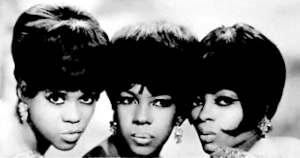
The Supremes, from the Detroit Brewster Housing Projects, started off as the Primettes in 1958. The quartet consisted of Diane Ross, Mary Wilson, Florence Ballard, and Barbara Martin, who quickly dropped out. In 1963, the Supremes had their debut album called, "Meet the Supremes", which included their first four singles and other songs. The album, like most of their singles, failed to chart.
The girls went out on tour as part of the "Motown Revue," which consisted of Marvin Gaye, Martha & the Vandellas, the Marvelettes, Mary Wells, the Miracles, and many others. On the billing, the Supremes were classified as "many others." "Where Did Our Love Go," was released as a single on June 17th, 1964.
While the Supremes were on tour with "Dick Clark's Caravan of Stars" around the U.S., the song had become a massive hit overnight, to the Supremes' mystery. It reached #1 on the Pop charts. The girls' lives had changed. After this single, the group would be on an endless road of major success world-wide. The Supremes left Detroit for the tour on a bus, and came back on an airplane.
Source: hometown.aol.com/carlovisentin/supremes2.html/
Photo Source: .tonygreen.com/music/Supremes/
James Taylor
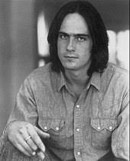
James Vernon Taylor (born March 12, 1948) is an American singer-songwriter and guitarist. A six-time Grammy Award winner, he was inducted into the Rock and Roll Hall of Fame in 2000. He is one of the best-selling music artists of all time, having sold more than 100 million records worldwide.
Taylor achieved his breakthrough in 1970 with the No. 3 single "Fire and Rain" and had his first No. 1 hit in 1971 with his recording of "You've Got a Friend", written by Carole King in the same year. His 1976 Greatest Hits album was certified Diamond and has sold 12 million copies in the US alone. Following his 1977 album JT, he has retained a large audience over the decades. Every album that he released from 1977 to 2007 sold over 1 million copies. He enjoyed a resurgence in chart performance during the late 1990s and 2000s, when he recorded some of his most-awarded work (including Hourglass, October Road, and Covers). He achieved his first number-one album in the US in 2015 with his recording Before This World.
Taylor is also known for his covers, such as "How Sweet It Is (To Be Loved by You)" and "Handy Man", as well as originals such as "Sweet Baby James". He played the leading role in Monte Hellman's 1971 film Two-Lane Blacktop.
Ike and Tina Turner

While at local nightclub Club Manhattan, Tina crossed paths with Ike Turner, the leader of Kings of Rhythm, who are credited as one of the first groups to introduce rock and roll the world with their song "Rocket 88." Tina, who was in her teens, was not particularly drawn to Ike romantically upon first sight and in fact, found him unattractive. (But she did admit that she was drawn to his voice.) She got up to sing his version of B.B. King's "You Know I Love You," and their musical bond was instantly formed. With Ike taking to her powerful voice, they soon became the Ike and Tina Turner Revue. The act scored their first R&B hit in 1960 with "A Fool in Love," reaching No. 2. The couple reportedly married in 1962 in Tijuana, Mexico.
The pair had a string of top 10 hits all while Ike was abusing Tina. Backed by a band and the singers/dancers dubbed the Ikettes, the couple had more top 10 R&B hits. In the mid-1960s, Tina worked with Phil Spector to create the track "River Deep, Mountain High," which didn't do well in the United States but flew to the top five in the U.K.
Ike and Tina didn't break into the upper echelons of the domestic pop charts until 1971 with their cover of Creedence Clearwater Revival's "Proud Mary," which also earned the act a Grammy for Best R&B Vocal Performance by a Group.
"Proud Mary" was a cornerstone of the act's live shows, with a spoken intro that Tina made up on the spot when Ike first introduced the song into the band's repertoire. And the high energy, intricate dance, and swimming motions displayed by the wigged out Tina and the Ikettes further cemented the revue's reputation for serving up legendary, must-see performances.
Vanilla Fudge
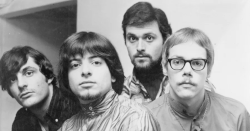
Sunday August 24, 1969
After Tim Bogert left high school, he was in and out of a number of bands in the NYC area. In 1965, he went on a lounge tour of the Eastern Seaboard with Rick Martin and the Showmen, where he met Mark Stein, the keyboardist and vocalist. The two of them hit it off, and they soon left to join with drummer Joey Brennan and guitarist Vince Martell to form their own band, The Pigeons. After recording an album called "While the World was Eating," they replaced drummer Joe Brennan with Carmine Appice and changed the name of the band to Vanilla Fudge.
According to Mark Stein, he and Tim were "hanging out" one day in early 1967 when "You Keep Me Hanging On" by The Supremes came on the radio. They both agreed that the words were very soulful and that the song was too fast. Tim replies that they took the idea to slow it down back to Vince and Carmine. They performed it that night and refined the arrangement over the next few weeks and the rest is history.
Read some memories about Vanilla Fudge concerts.
Source: www.timbogert.com/bogertb.htm
Josh White, Jr.
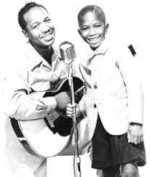
and his Father
At the age of four, Josh White Jr. made his professional debut alongside his father at the Café Society in New York City. In 1949, he co-starred with the elder White on Broadway in "How Long Til Summer?" For his work on the show, Josh White Jr. received a special Tony Award.
In 1956, Josh White Jr. made his solo recording debut on Decca with "See Saw," co-written with Marvin Hamlisch. Hamlisch was a classmate of White's at the Professional Children's School along with Christopher Walken, Sandra Dee, Leslie Uggams, and Elliott Gould. In the 1960s, White became a popular attraction in the college tour circuit, while continuing to record.
In 1979, he headlined at concert special for PBS and starred in a stage biography of his father a few years later. He received a Grammy nomination in 1987 for Jazz, Ballads and Blues, another tribute to his father. White continues to record. One of his most recent albums was Tuning for the Blues, a collection of folk tunes, which was released in 2011.
Stevie Wonder
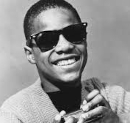
Stevie Wonder is an American musician and a former child prodigy who became one of the most creative musical figures of the 20th century with hits like "My Cherie Amour," "You Are the Sunshine of My Life," and "Superstition."
Stevie Wonder made his recording debut at age 11, becoming a 1960s force to be reckoned with via chart hits like "Fingertips, Pt. 2," "I Was Made to Love Her" and "My Cherie Amour." Over the next decade, Wonder had an array of No. 1 songs on the pop and R&B charts, including "Superstition," "You Are the Sunshine of My Life" and "Higher Ground." He continued to churn out hits into the 1980s, including "I Just Called to Say I Love You" and "Part-Time Lover."
Wonder was born Stevland Hardaway Judkins on May 13, 1950, in Saginaw, Michigan. He was born six weeks early with retinopathy of prematurity, an eye disorder which was exacerbated when he received too much oxygen in an incubator, leading to blindness.
Wonder showed an early gift for music, first with a church choir in Detroit, Michigan, where he and his family had moved to when he was four years old, and later with a range of instruments, including the harmonica, piano and drums, all of which he taught himself before age 10.
Source: Source: biography.com/
Earl Wrightson and Lois Hunt
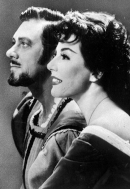
and Lois Hunt
Earl Wrightson was a Baltimore, MD native who sang and acted in many operas, musical comedies and concerts and had his own television variety shows in the 1950s, including one Emmy winner, "The American Musical Theatre." His baritone voice also was heard on many other radio and television programs, including "The Prudential Hour," "The Coca-Cola Hour," and "At Home." In addition to touring in operas and musicals, he had a starring role in the 1945 production of "Firebrand of Florence" featuring Lotte Lenya and music by Kurt Weill.
He told interviewers he had missed many high school classes before leaving City, watching criminal court trials instead, because he decided he could learn more about life there than in school and it would help his acting career. However, he then decided to concentrate on singing.
In 1961, he appeared in a production of "South Pacific" at the Lyric Theater. In 1970, he appeared at the Mechanic Theater in the Sigmund Romberg Operetta, "Blossom Time."
Lois Hunt appeared on Earl Wrightson At Home in the early 1950s, having been a listener of the host's radio show when she was a teenager. She became a frequent performer on the show and developed an intimate personal relationship with Earl Wrightson that lasted for decades. The two appeared on television in the mid-1950s on The Robert Q. Lewis Show, a variety program. They went on tour around the United States, performing musical numbers and operettas at nightclubs and concert venues.
Their final performances together were in a 97-city tour over six months in 1979 and 1980 of "The Sound of Music," in which Hunt proudly stated that they "were the only two members of the cast whose understudies never went on," reflecting their "great pride in our professionalism and integrity."
A resident of Frenchtown, New Jersey at the time of her death, she died at age 84 on July 26, 2009, in a Manhattan hospital. She was survived by a son. Her marriage to Morton M. Hunt had ended in divorce, while her relationship with Wrightson ended with his death on March 6, 1993. He was 77.
The Young Americans
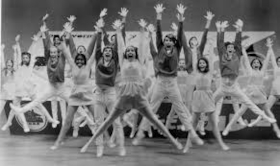
The Young Americans is a non-profit organization and performing group based in Southern California. First founded in 1962 by Milton C. Anderson, the group was credited with being the first show choir in America, mixing choreography with choral singing. While experiencing national television exposure early on, The Young Americans later taught music to students in the United States and other parts of the world as advocates of music education in their International Music Outreach Tours. The group has approximately 200 young people between the ages of 16 and 25 from nearly every US state and several other countries.
The Young Americans first appeared on a Bing Crosby television special in the early 1960s. For the next several years, the group would appear on numerous variety shows, singing and dancing with entertainers such as Julie Andrews, Judy Garland, and Bob Hope.
In 1967, the group was featured in a film, Young Americans, which was awarded a 1968 Academy Award for best documentary. In May 1969, the film was disqualified because it had premiered in October 1967, and was therefore ineligible for the 1968 award.
Throughout the 1970s, along with television appearances with Julie Andrews, The Ed Sullivan Show, Kraft Music Hall, and their own television special with Lorne Greene. The Young Americans began concert tours in the United States and abroad at venues that included Dorothy Chandler Pavilion, Madison Square Garden, the Hollywood Bowl, and with Liberace in Las Vegas. In the 1980s, the group continued to tour internationally.
The choir's performances for Liberace in the early eighties were featured in the HBO film Behind the Candelabra, based on the book by Liberace's lover Scott Thorson. The latter sections of the film highlight the relationship between Liberace and Young Americans alumnus Cary James, Liberace's lover who died of AIDS in 1995. The affair between Liberace and James is depicted as a major source of tension between Thorson and Liberace. During the film, The Young Americans sing "I Belong With You."
